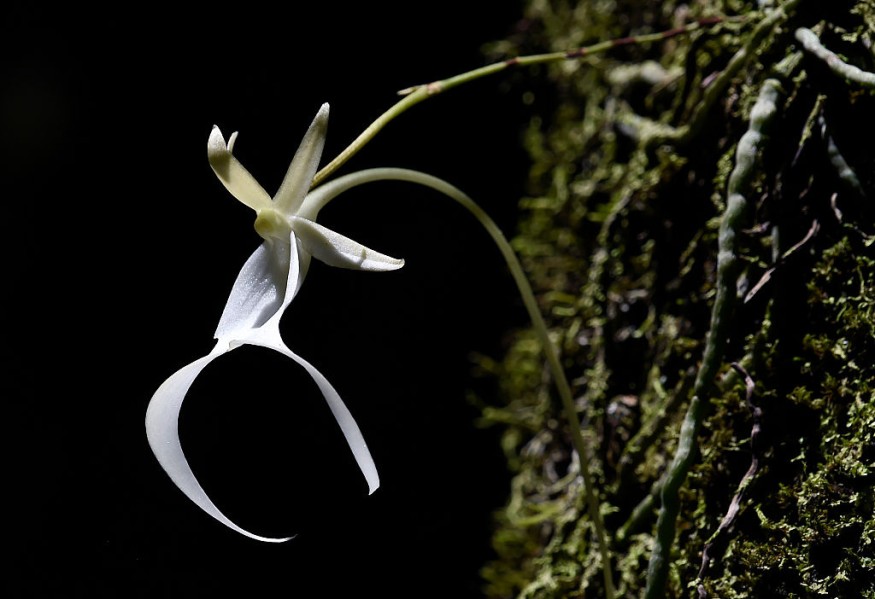
Even though the ghost orchid is an airborne plant without leaves, it nonetheless grows through photosynthesis.
Getting to Know The Ghost Orchid
With its lengthy, delicate petals and nectar spur, the ghost orchid has long stood for the South Florida landscape. The ideal habitat for this sensitive plant is a deep swamp with cypress, pond apple, and palm trees. Similar to many other orchids, the ghost orchid has particular environmental needs, including a particular kind of fungus, high humidity, moderate temperatures, and dappled shade.
The ghost orchid is distinguishable from other kinds of orchids by the existence of fine white marks dotting its roots. Its tangled mass of green roots clings fast to the trunks of numerous tree species including pond apple, cypress, and maple, and is visible all year long. The ghost orchid blooms in June and July, which is the height of mosquito season.
Leafless But Uses Photosynthesis
Despite having no leaves, the ghost orchid has photosynthetic roots that may synthesize sugars when exposed to sunshine. Its roots work alongside a certain kind of fungus to assist it in absorbing nutrients in exchange for extra carbohydrates. The said fungus is a lifeline for the orchid, where it will not survive without this fungus.
The ghost orchid's leaves have been reduced to scales, and mature plants appear to be devoid of foliage. Additionally, it has a shortened stem, which can be challenging to see even on wild ghost orchids.
Pollination
It is pollinated at night by the sphinx moth, whose large tongue or proboscis enables it to sip nectar from the blossom that is difficult for other insects to access.
One or occasionally two white flowers with similar sepals and petals are produced by a small percentage of the plants, which flower from May to August. The labellum has three lobes, with a triangular one in the middle, while the other two are elongated and tapering. In hardwood hammocks, tramways, sloughs, and cypress domes, this orchid is found growing on a variety of tree types.
The moth that will pollinate it should visit multiple ghost orchid plants in order to spread pollen. The ghost orchid is a rare and endangered species of plant that rarely blooms.
Other moth species, including the gaudy sphinx moth and the streaked sphinx moth, have been recorded in recent fieldwork visiting the flowers. Two other moth species, the pawpaw sphinx and the fig sphinx moth, have also been seen with pollinia from ghost orchid flowers on their heads.
Also Read : Critically Endangered Cooper's Black Orchid Undergoes DNA Testing in Search for Species-Saving Fungi
Mysterious and Endangered
In South Florida, human development has resulted in habitat degradation and hydrologic changes that have contributed to the population fall of ghost orchids. Additionally, overharvesting has harmed this unique plant. In several public lands in South Florida, including Big Cypress National Preserve, the ghost orchid is currently protected. The ghost orchid and other orchid species will continue to live in South Florida's distinctive mosaic of ecosystems with continuous preservation.
In Florida, ghost orchids also grow slightly higher above the ground than in Cuba, presumably because, during the rainy season in South Florida, stagnant water inhibits seedlings from developing on submerged tree surfaces.
Since ghost orchid populations have already been steadily declining in the wild, hurricanes and other natural disasters may bring them close to extinction in the next 25 years or less, according to simulations of habitat alterations.
Related Article : New Orchid Species that Looks Like Glass Discovered in Most Common Places in Japan
© 2025 NatureWorldNews.com All rights reserved. Do not reproduce without permission.





